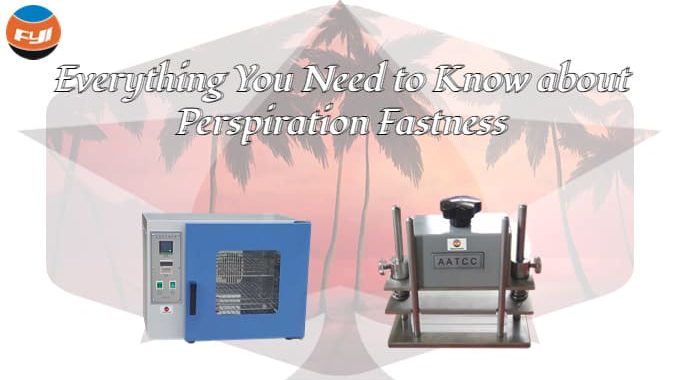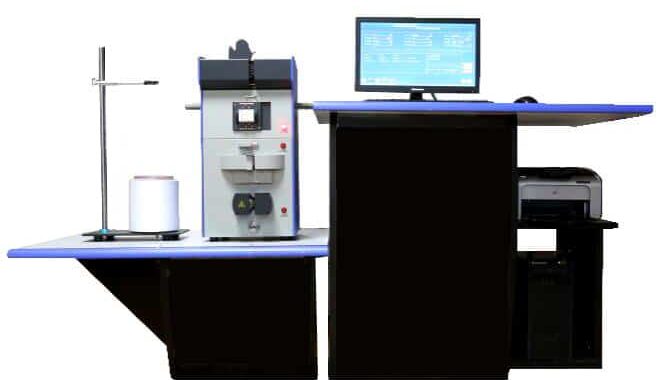
Everything You Need to Know about Perspiration Fastness
Contents
What is perspiration fastness?
Perspiration fastness is the degree of color retention of textiles in sweat, which is especially important for clothing products.
During daily use, the textile stays in close contact with the skin for a long time. At the same time, contact with the sweat secreted by the skin will have a great impact on some dyes, causing them to transfer from the textile to the skin. Some of the dyes on textiles are not resistant to acid and some are not resistant to alkali. Therefore, during the test process, it is necessary to prepare acid and alkali artificial sweat to simulate the acid-base sweat of the human body. And test the textiles at 37°C to simulate human body temperature, mainly for textiles that are in contact with the skin.
The standard of perspiration fastness
At present, the common test standards for perspiration fastness mainly include: “Tests for Color Fastness of Textiles Part E04: Color Fastness to Perspiration” (ISO 105-E04: 2008); “Color Fastness to Perspiration” (AATCC 15: 2009).
AATCC 15 Tests for color fastness to acid perspiration. ISO 105 E04 goes a step further and tests color fastness to acidic and alkaline perspiration.
Human sweat is usually acidic. But it becomes alkaline at higher temperatures or in the presence of bacteria. So the ISO standard is more thorough in this case.
Determination of color fastness to perspiration(BS EN ISO 105-E04)
Overview
Scope of application: Applicable to the color fastness test of various textiles to perspiration.
Principle: The textile sample is combined with the specified adjacent fabric and placed in two different test solutions containing histidine. After being treated separately, remove the test solution and place it between two flat plates with specified pressure in the test device. Under the specified temperature conditions, place the specified time, and then dry the sample and the adjacent fabric separately. Use the gray scale or instrument to evaluate the discoloration of the sample and the staining of the adjacent fabric.
Equipment and materials
Test equipment: including a stainless steel frame; a weight weighing 5kg and a bottom area of 11.5cm×6cm, attached with a glass plate or acrylic resin plate of the same size and a thickness of 0.15cm. The combined sample must be 10cm×4cm to ensure that the sample is under pressure of 12.5kPa.
Thermostat: Keep warm at 37±2°C.
Reagent:1) . L-histidine hydrochloride monohydrate2) . Sodium chloride3) . Disodium hydrogen phosphate dodecahydrate or disodium hydrogen phosphate dihydrate4) . Sodium hydrogen phosphate dihydrate5) ) . Sodium hydroxide
Backing Fabric: Use one piece of multifiber backing or two pieces of monofilament backing.
Gray scale for assessing discoloration and staining.
Sample preparation
Fabric
If the sample is fabric, prepare the sample by one of the following methods:
a) Take a piece of (40±2)mm×(100±2)mm sample, the front side is in contact with a piece of (40±2)mm×(100±2)mm multi-fiber lining, and suture along one short side, Form a combined sample.
b) Take a piece of (40±2)mm×(100±2)mm sample, sandwich it between two pieces of single fiber lining, and sew it along one short side to form a combined sample. When testing printed fabrics, the front side of the fabric is in contact with half of each of the two adjacent fabrics, cut off the other half, and cross them on the back (for example, if the two adjacent fabrics are silk and cotton, cut half of the silk and cotton, and the front of the fabric One end is in contact with the silk, and the same end on the opposite side is in contact with the cotton). If one sample cannot cover all the colors, multiple combined samples are required to cover all the colors.
Yarn
If the sample is yarn, it is woven into a fabric using an amount of yarn equal to half the weight of the two adjacent fabrics. Or form a thin layer in parallel lengths, sandwiched between two monofilament linings. Or sandwiched between a piece of multifiber lining and a piece of non-dyed fabric of the same size, the four sides are sewn and the yarns are fixed to form a combined sample. Two composite specimens are required for the entire test.
Fiber
If the sample is loose fiber, the amount is about half of the weight of the two adjacent fabrics, and it is combed and pressed into (40±2)mm×(100±2)mm thin slices, sandwiched between two single fiber pastings. between linings. Or sandwiched between a piece of multi-fiber lining and a piece of non-dyed fabric of the same size, between the lining fabric, sew along the four sides to fix the fibers to form a combined sample. The entire test requires two composite specimens.
Test solution preparation
Preparation of test solution with distilled water: Prepare and use immediately.
lye
Contains per liter:
L-histidine hydrochloride monohydrate 0.5 g
Sodium chloride 5 g
Disodium hydrogen phosphate dodecahydrate 5 g or
Disodium hydrogen phosphate dihydrate 2.5 g
Adjust the pH value of the test solution to (8±0.2) with 0.1mol/L sodium hydroxide solution
acid
Contains per liter:
L-histidine hydrochloride monohydrate 0.5 g
Sodium chloride 5 g
Sodium dihydrogen phosphate dihydrate 2. 2 g
Use 0. 1mol/L sodium hydroxide solution to adjust the pH value of the test solution (5. 5±0. 2)
Test procedures
1 First weigh the weight of the combined sample, calculate the volume of the required solution according to the bath ratio of 50mL solution: 1 gram of sample, measure the required amount of acid and alkali test solution with a graduated cylinder, pour it into the container, and then put it into a piece Assemble the specimens, allow to wet completely, and allow to stand at room temperature for 30 minutes. If necessary, press and shake slightly to ensure that the test solution can penetrate well and evenly. Take out the sample, weigh the sample again to ensure that the weight after soaking is 2-2.5 times of the initial weight. The sample is sandwiched between two sample plates and placed on the perspiration tester. Then put the weight on it, and then tighten the screws to fix the position. In this way, the sample is subjected to a pressure of 12.5kPa, and then the weight is removed, and other combined samples are placed in the same way. The equipment used for alkali and acid tests should be separated.
2. Put the two sets of acid and alkali instruments with combined samples in a constant temperature box, keep the test device vertical, and place it at a temperature of 37±2°C for 4 hours.
3 Remove all the stitches on the combined sample except one short side, unfold the combined sample, and hang it in the air at a temperature not exceeding 60°C to dry.
4 Use the gray scale card or instrument to evaluate the discoloration of each sample and the staining of the side of the adjacent fabric in contact with the sample.
Comments are closed.



I can’t imagine the time and effort that goes into writing such high-quality content, but you make it look easy.
Woh I enjoy your blog posts, saved to favorites! .
Want to expand your knowledge? Look no further than this blog.
Read one post, and you’ll find yourself eager to explore the entire archive.